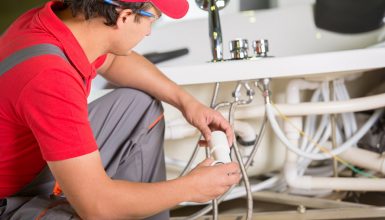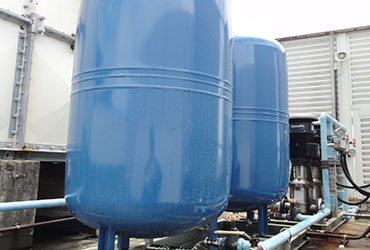An Complete Handbook to Solving Low Water Pressure in Your Home
An Complete Handbook to Solving Low Water Pressure in Your Home
Blog Article
What are your opinions with regards to 9 Reasons for Low Water Pressure in Your House?

Low water pressure in your house can be an aggravating issue, affecting whatever from bathing to washing dishes. If you're experiencing weak water circulation, there are several feasible causes and services to explore. In this overview, we'll go over common reasons for low tide pressure and functional steps to resolve the issue properly.
Introduction to Low Water Stress
Low water stress occurs when the flow of water from your faucets, showers, and various other components is weak than usual. This can make daily tasks extra challenging and much less efficient. Comprehending the reasons for low water stress is crucial to locating the best remedy.
Usual Root Causes Of Low Water Pressure
Faulty Pressure Regulators
Stress regulatory authorities are accountable for maintaining regular water pressure in your home. If they malfunction, it can result in low tide stress or unequal circulation throughout your home.
Local Water System Issues
Occasionally, the issue exists outside your home. Municipal water system issues, such as main line leaks or maintenance job, can briefly decrease water stress in your location.
Pipeline Obstructions
With time, pipelines can become blocked with mineral deposits, sediment, or debris, restricting the flow of water. This is an usual concern in older homes with galvanized steel pipelines.
Corrosion
Corrosion within pipelines can result in leaks and decreased water pressure. Corrosion build-up can tighten water circulation, particularly in aging plumbing systems.
How to Detect Low Tide Pressure
Inspecting Pipes
Check noticeable pipes for indicators of leakages, rust, or clogs. Take note of any kind of uncommon sounds, such as knocking or rattling pipes, which can indicate concerns within the plumbing system.
Consulting with a Plumber
If you're unable to determine the root cause of low tide pressure, take into consideration employing a professional plumber to conduct a comprehensive inspection. They can recognize underlying issues and advise proper remedies.
Checking Faucets and Components
Beginning by examining the water pressure at various faucets and fixtures throughout your home. If the concern is separated to details areas, it may show local issues.
DIY Solutions to Fix Low Water Pressure
Flushing Water Heater
Debris accumulation in the hot water heater can limit circulation and minimize effectiveness. Purging the tank occasionally helps eliminate debris and maintain optimum performance.
Checking Stress Regulatory Authority
Make certain that the pressure regulator is operating properly. Readjusting or changing the regulator can help restore proper water stress throughout your home.
Cleaning Up Aerators and Showerheads
Natural resources can gather in aerators and showerheads, decreasing water circulation. Get rid of and clean up these components regularly to boost water stress.
Clearing Clogs in Pipes
For minor blockages, attempt using a plumbing serpent or chemical drainpipe cleaner to clear blockages in pipelines. Beware when using chemicals and comply with safety and security standards.
When to Call a Professional Plumber
If DIY efforts fall short to resolve the issue or if you suspect significant plumbing issues, it's ideal to seek assistance from an accredited plumber. They have the experience and tools to resolve intricate issues securely and properly.
Preventive Measures to Maintain Water Pressure
Setting Up a Pressure Booster
Take into consideration installing a stress booster pump to boost water stress in areas with constantly reduced circulation. This can be particularly valuable for multi-story homes or buildings with high-demand fixtures.
Monitoring Water Usage
Be mindful of water use practices and stay clear of ill-using the plumbing system. Easy modifications, such as incredible showers and laundry lots, can assist maintain sufficient water pressure.
Routine Maintenance
Set up regular upkeep for your plumbing system to stop problems such as deterioration, leakages, and blockages. Addressing small issues early can aid prevent more significant repair work later.
Verdict
Dealing with low water pressure can be aggravating, however identifying the underlying reasons and implementing suitable remedies can restore optimum circulation throughout your home. Whether it's cleaning aerators, inspecting pipes, or seeking advice from a plumber, taking aggressive steps can make certain a constant supply of water for your day-to-day demands.
How to Fix Low Water Pressure
Have you noticed the water pressure in your shower or taps seem a little weak? If so, the water pressure in your home may be lower than it should be.
Low water pressure can affect many areas of your home. You might notice it taking longer to fill the bathtub or washing machine or that you’re not getting the pressure you need from your garden hose.
These pressure changes can be sudden or may happen over time. It may take a little investigating to find the cause, but there’s usually an easy solution.
Testing Water Pressure in Your Home
One easy way to check water pressure at home is with a water pressure gauge. You can find one online or at a hardware or home improvement store.
Before you check the pressure, make sure the taps and appliances that use water are turned off. Then, connect the gauge to the exterior hose bib or tap.
Turn the tap up all the way and read the gauge to see the water pressure. If you don’t have an exterior tap, you can disconnect the hose of your washing machine and connect the water pressure gauge to it.
Make sure all your water-using appliances are turned off. Turn the faucet on high to read your home’s pressure or PSI.
If the idea of checking water pressure or dealing with plumbing issues on your own seems a bit daunting, you can call a professional plumbing service to handle the job.
They can help you find the root of your water pressure issues and determine the best solution to the problem.
Clear the Clogs
A clogged pipe is one of the most common issues that leads to low or no water pressure. Pipes can become clogged due to a buildup of mineral deposits.
This is especially true if you have hard water where you live. Even a small clog can reduce the pressure of water running through the pipes.
Clogs usually build up over time. People notice when it affects their showers or the appliances that use water every day.
There are products and tools for clearing clogs on your own or you can call a plumber. They have the expertise and the right tools to locate clogs and determine whether it’s better to repair or replace the pipe.
Clean or Replace Corroded Pipes
Do you live in an older home where the plumbing is decades old? If so, your pipes are probably prone to corrosion. This is especially true if the pipes are galvanised steel.
This material is likely to corrode after 20 years of use. Brass pipes average 40 to 70 years before corroding, while copper pipes are good for 50 years or more.
If you installed extra plumbing fixtures after building or moving into your home, there’s a good chance you could have corroded pipes. The more plumbing fixtures in the home, the harder your pipes have to work, and the more likely they will corrode.
It’s important to address pipe corrosion. Failing to fix the problem can lead to cracked pipes, major leaks, and water damage in your home.
Swapping out old plumbing pipes reduces the risk of corrosives. Updated plumbing produces cleaner and better-tasting water, too.
Seal the Leaks
Another cause of low water pressure could be a leak in the pipes or in the water line. Small cracks or holes leak water into unintended areas before the water can reach the various taps in your home.
If your basement or foundation has flooded, it’s a strong sign of leaking pipes. You can look for leaks by turning off the taps for a couple of hours. Then, check the water metre reading.
An increase may indicate a leak. To see or access the plumbing, check for wet spots or pooling water. If you find a leaking pipe, there could be more.
You may not be able to reach these spots on your own, so it’s a good idea to enlist the help of a professional plumber at this point. They can check all your pipes for leaks and repair or replace damaged ones to restore adequate water pressure.
It’s important to address water leaks right away. Standing water can lead to mould or mildew growing in your home.
Replace the Pressure Regulator
Do you have a pressure regulator in your house? It’s a valve that helps keep the water pressure entering your home at safe levels. A functioning regulator keeps the pressure constant and flowing at around 50 PSI.
High water pressure may damage your plumbing and lead to excess stress on your appliances that use water. When a pressure regulator fails, it can lead to an increase or decrease in pressure.
Sediment or debris in the value can cause a blockage. You can check the pressure regulator by attaching the pressure gauge to an outdoor spigot. If the pressure reads lower than the valve reported, the regulator may be faulty.
A plumbing expert can assess whether the pressure regulator is working for your home. It’s important to replace a failed regulator.
Instal a Booster Pump
Sometimes you may look everywhere to discover the cause of low water pressure but not find an answer. Talk to your neighbours to see if they’re having similar issues.
If other homeowners near you are experiencing water pressure problems, installing a booster pump may be a good solution. It can increase water pressure to the main supply line that runs to your home’s system.
An experienced pro in UK plumbing issues can help you install a booster and restore the water pressure to your house.
How to Fix Low Water Pressure
If you notice the water pressure in your home is less than what it should be, there are a variety of possible problems and solutions. If you’re not a plumbing expert or don’t have the time to spare for DIY plumbing issues, call the pros instead.
At PM247, we know how to improve low water pressure in your home. Simply tell us the plumbing issue you’re having and we will take it from there.
For over 20 years, we’ve provided professional plumbing, drainage, roofing, heating, and electrical services to our customers. We would love to help you, too!
https://www.pm247.co.uk/blog/how-improve-low-water-pressure/

I have been very fascinated with Low Water Pressure in the House? and I really hope you enjoyed the blog entry. Those who liked our post plz don't forget to pass it around. I appreciate reading our article about Low Water Pressure in the House?.
Book Instantly Report this page